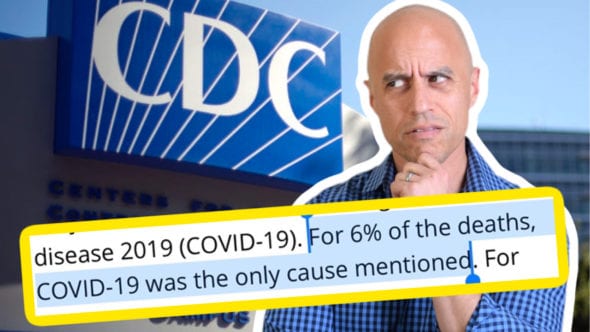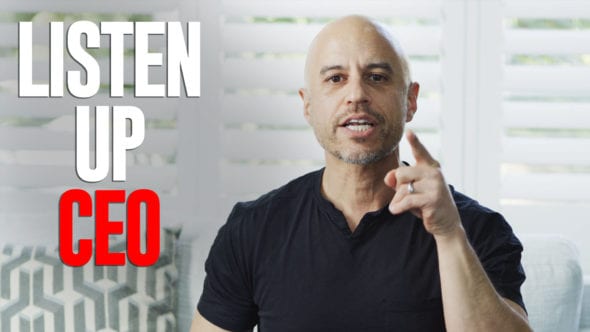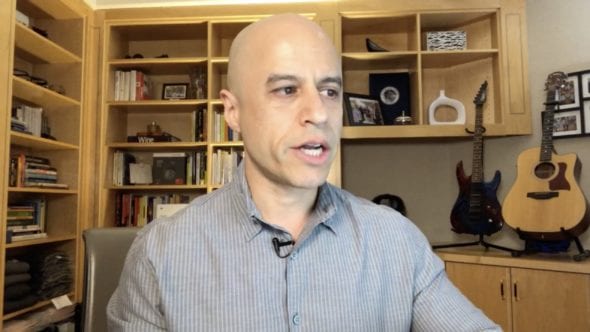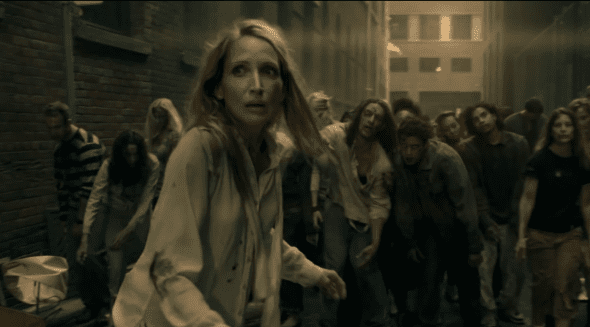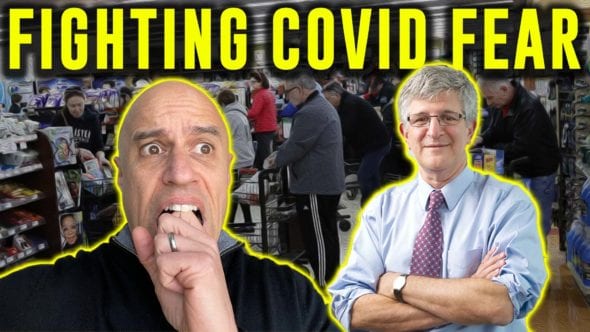Here’s the scoop on the FDA committee recommendation and the pros and cons of vaccinating young children against SARS-CoV2.
– [Zubin] Right, so the FDA Advisory Committee votes to give authorization for ages 5 to 11 for Pfizer’s coronavirus vaccine, the mRNA vaccine, this news just in, and what I wanna do is actually unpack it the way that my favorite pop star, Nuancé, would, with an alt-middle perspective. So let’s look in the pros and cons of this and what’s going on. Now, what you’ve gotta understand, first of all, is FDA, basically, their role is to say, “Yeah, okay, safety and efficacy are okay. “Over to you, CDC,” and CDC’s role is then to say, “Okay, so who should actually get it? “Of the kids 5 to 11, “who should actually receive this vaccine?”
And this is where that nuance becomes important. So let’s look at what’s going on. 3,200 kids, roughly half placebo, half actually two doses of Pfizer’s vaccine at one third the adult dose. Now, this is interesting, because from ages 5 to 11, apparently one third the dose is right, but the minute you turn 12, suddenly you get a full adult dose, so not sure about the nuancé there, but that’s what they’re doing. Now, remember, one of the side effects of this vaccine, the main side effect, is, especially in young males, is myocarditis, pericarditis, inflammation of the heart and the lining around the heart, and could it be that actually the higher dose does that more? Hmm, that’s worth thinking about. So back to this. 3,200 split up. What they found was roughly a 90% efficacy at preventing symptomatic COVID in kids. That’s pretty good. It doesn’t surprise, I think, anybody that the vaccine actually works in kids.
It really ought to. It works in adults. It works in adolescents. It was probably gonna work in kids. The question is, so what’s the risk and the benefit of getting the vaccine? So this is where I think it’s important to look into exactly these columns, because when it goes over to CDC, we hope they basically make a recommendation that makes sense, in terms of risk and benefit for the kids they’re pointing at. So let’s look at the pros of vaccination in kids. All right, now, understanding that in this small trial, we don’t know the rate of myocarditis, because there aren’t enough kids in the trial to discover something that happens at a relatively rare frequency, right? So it’s difficult to really go granular. So they have to extrapolate data from older kids to go, “Oh, the myocarditis rate in older kids is this. “Let’s extrapolate it when we’re doing our pro “and con analysis.” All right, so pros of vaccinating kids.
Well, kids get COVID. They don’t get it as often as adults, but in the days of alpha and previous variants, it was actually felt, not only don’t they get it that much, but they actually don’t actually transmit it that much. In the era of Delta, actually, that feeling is starting to shift. As the virus evolves, it’s realized, well, the adults are knocked out, some of them are vaccinated, who are we gonna hit? Mm, the kids are here, right? They’re probably not going to die, most of them. They’re probably not going to do poorly, but they’re now going to get infected, because Delta is just that contagious, and they probably spread it too, in households. So you would reduce infection rate and spread potentially by vaccinating a lot of kids, because right now, they can’t be. Now, what about long COVID? That is a thing in kids. It’s not as common as in adults, and presumably, vaccination would prevent a degree of infection and a degree of long COVID, so you could help with that, then you have the issue of MIS-C, this multi-system inflammatory syndrome of children. Now, that’s a real thing. So roughly 5,200 kids in the US and 46 deaths from that inflammatory syndrome of multiple organs.
It’s a post immune effect, so you get infected. A lot of times, you don’t even know you’ve been infected, then a few weeks later, you develop this syndrome, and that’s a problem, because, again, these kids end up in ICU, they end up getting quite sick. Most of them recover, but it’s still a big deal, right? And you should understand, too, that natural COVID infection increases your risk of myocarditis, pericarditis by about 16 fold. At least, that’s one of the estimates, and so you probably don’t wanna get COVID if you can avoid it in kids, right? If you had a choice, oh, I’m going to have them get COVID or I’m not, probably better just not to, because of these things. Now, in some kids, they’re going to get very sick and they’re gonna die, and that’s because typically they have comorbidities, whether it’s obesity, diabetes, heart issues, lung issues, other tendencies to that, immune compromise. They’re gonna do worse, and right now, there’s no vaccine for them. So the idea that especially those kids would do well with a vaccine is pretty clear, I think. Now, what’s another benefit? Generally increasing immunity in the population, so there’s less targets for virus, less replication, less chance to develop variants, et cetera. Okay, that’s a big picture thing.
Now, also, why do we care about kids getting infected if the overall deaths in the country are 520, it’s not a massive catastrophe, although 520 children is still a big deal? Well, one of the problems is kids’ ICUs can get overwhelmed pretty quickly, just by a sheer numbers game. If a lot of kids get infected rapidly, you’re gonna overwhelm kids’ hospitals, so then even kids that need regular care or ICU care could be impacted. So that’s the thinking on the pro side of it, right? Now, on the con side, well, first of all, there are some estimates that up to 40% of US children have already been infected with COVID, many of them asymptomatically, don’t even know it, and so we don’t know how long that immunity lasts, we don’t know how robust it is in children, but we could say it’s probably not negligible, if you’re extrapolating from adults, so why would you wanna put them through another vaccination with potentially the attendant risk of myocarditis and so on and so forth, and just sticking a kid with a needle if you don’t have to is not something you necessarily wanna do.
So the natural infection rate is one thing that we should think about, like are we already a little too late for a mass vaccination campaign for kids? The other downside here is the myocarditis piece. So myocarditis, usually it’s reversible. It’s this inflammation. We’ve talked about it many times, but it can land you in the hospital as a kid, and it’s all fun and games talking about heart issues in the abstract, oh, it’s reversible and so on, until it’s your kid that gets myocarditis, right? Then it becomes quite real. So it is a real downside, and the FDA Advisory Committee was quite torn back and forth about this issue, because according to their analyses, when the, and again, we don’t even know what the rate is in kids at this one-third dose, we’re extrapolating, so there’s an uncertainty element here, which we have to put out there and say, we actually don’t know. So you’d better take that into account when you’re talking about mandates and stuff like that, right?
Okay, so the data analysis they did said, okay, assume a certain amount of circulating coronavirus in the community, do the risks of myocarditis extrapolated from older kids, versus the benefits of preventing death, MIS-C, all the other things, what’s the balance? Well, it turns out if there’s a butt ton of Delta circulating in the community, the benefits of getting vaccinated as a child, 5 to 11, actually outweigh the risks of myocarditis, but that flips when the circulating viral rate is lower, when the prevalence of the virus is lower, because then your risk of getting coronavirus is lower, 40% of you already have some immunity, and there’s not that much circulating, so now it’s more risk than benefit. So you see how these things are not…
First of all, you have to acknowledge the uncertainty of it. Second of all, you have to understand that it’s always looking at risk and trying to understand it, and then making decisions, based on what your own risk tolerance is for your child. Now, as a policy maker, you have to look at this and go, okay, so now, it’s off to the CDC. What’s CDC gonna say? What FDA pretty much said, the committee, the advisory committee said, “Hey, one of the reasons we’re gonna okay this “is that we’re just basically saying, look, “it’s effective and it’s pretty safe, “but in terms of deciding who gets it, “CDC better do the right thing and make a good decision.”
Certainly, kids with risk factors should get this vaccine, and many of them are minority kids, and actually one of the FDA committee members was saying that, he’s like, “Listen, we need to at least make this an option.” Imagine you’re the parent of a child who has some immune compromised or a leukemia or diabetes, obesity, lung disease, and they haven’t been infected with COVID, and for that kid, COVID can be a huge deal. These are the ones who are in ICU, right? These are the ones who die.
Now, saying, okay, that’s available. That’s available for you. Oh, well, it would be a no brainer, as far as I’m concerned, for those kids to get that vaccine, and it should be then available. So CDC should absolutely say that, and that’s important. I think that’s why this is very important. But then they should look at, okay, what about the broader population? I think saying, hey, if you wanna make the risk benefit analysis for your child, it’s available for you to make, here’s the data, make your choice. Mandating that, based on what I’ve seen so far, the data that I’ve seen, and again, it’s incomplete and I’m open to having my mind changed with new data, but right now, if you mandate that for 5 to 11 year old kids, that seems, to me, absolutely ridiculous.
I’m not saying mandates for vaccines for kids are wrong. I’m saying with the data I’ve seen so far, to mandate a kid who’s already had coronavirus to get a vaccine, and it’s a young boy, and there’s some rate of myocarditis, to mandate it for them to go to school seems to me crazy. Now, I’m willing to be talked out of that with good data and good argument, but right now, that’s my impression. But that doesn’t mean that, like for my ten-year-old, would I choose to get a vaccine? With the data I’ve seen so far, I’d like to see more data on myocarditis, but she’s female, I might. I might elect to do that, because I just don’t even want her getting COVID, and she hasn’t had it. So that’s how I would make the decision for my kid, and I think we should treat parents as grownups, give them information, be transparent, understand where the uncertainty is, and I’m actually glad FDA is doing this maneuver, but now, I wanna see what CDC does, and then I wanna see what people like Governor Newsom do, in terms of policy in California. If it’s a policy to mandate 5 to 11 get vaccines and go to school, I really disagree, based on the current data. I just don’t think the risk benefit is that clear. So now, that’s what I think.
So all that being said, now it will be interesting to see what CDC does. The other thing I would love to see them do is figure out why is it that these kids can get a third the dose and have a pretty good efficacy, but we’re giving a twelve-year-old the full dose? Should those kids get a single dose? Now, Paul Offit, who was on my show said, “No way, the single dose doesn’t generate as much “of that memory immune B and T-cell, “in the absence of prior coronavirus infection.” But again, if we’re assuming 40% upwards of kids have already been infected, maybe one dose, as a general rule, is a good idea, and certainly, the myocarditis tends to happen with the second dose. All right, so that’s the alt-middle on this, that’s the nuance on this.
Notice there’s uncertainty? Notice there’s gray areas? Notice there’s science that we know so far, and then there’s policy? How do you actually implement the science? They’re not the same thing. They relate to each other, but they’re not the same thing, and too often nowadays, we conflate the two. Second, if you start shaming parents for not getting their kids vaccinated, you can just go to hell, because we just don’t have enough data to say, as a policy, you’ve got to mandate this. That’s what I think so far, and again, that data may come out that changes my mind or compelling arguments, and third, Nuancé is the best R&B artist, you know, All the Shingle Ladies. I don’t know where that came from.
All right, guys, do me a favor. Share the video. If you like our way of educating, become a supporter, ZdoggMD.com/supporters. If you’re on YouTube, subscribe and hit the little bell, so that you get notifications when we go live. I love you, guys. I’m not even gonna talk about Facebook, because they are an awful, awful, awful scourge on the face of humanity, and yet, I have two and a half million followers there, so I can’t abandon them. That’s why I’m still there, otherwise, based on conscience, I would leave that platform. All right, guys, I love you, and we are out. Peace.
Category
- The ZDoggMD Show (824)
- Featured Videos (189)
- Doc Vader (142)
- Against Medical Advice (128)
- Medical Humor (95)
- Public Service Announcements (87)
- Music Parodies (74)
- Nurses (59)
- Meditation (52)
- The VPZD Show (38)
- ZVlogg (36)
- ZTalks (28)
- ZBlogg (24)



